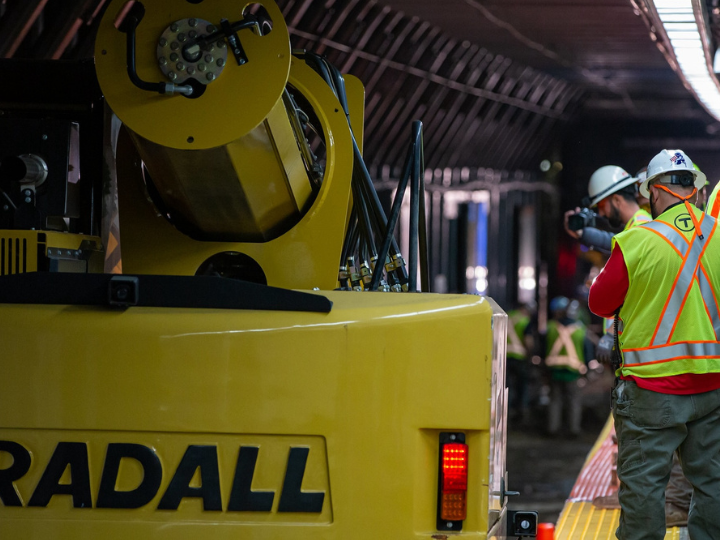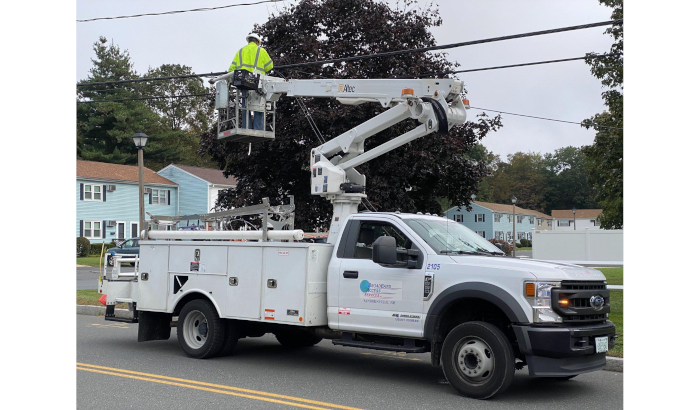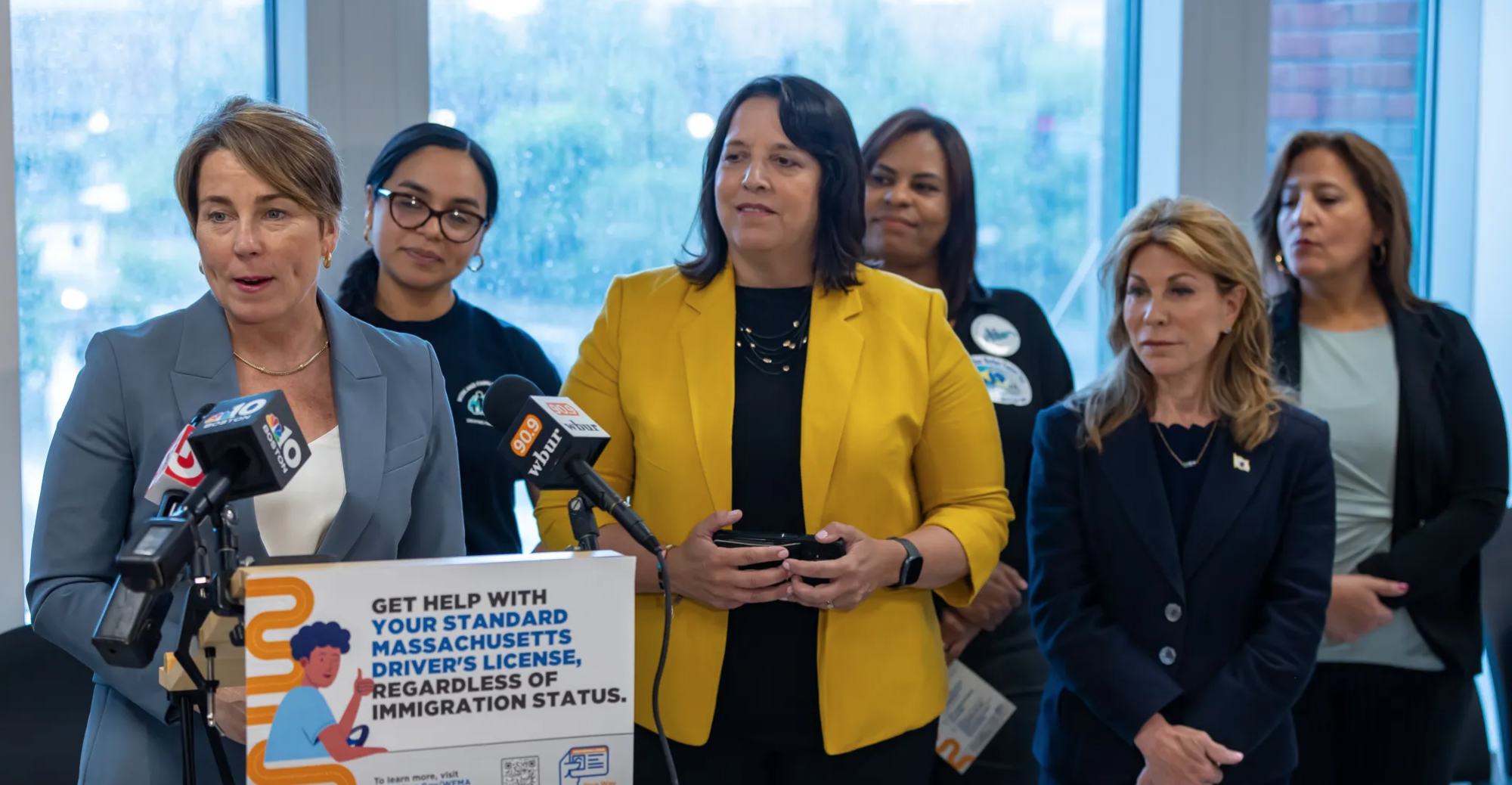The T commissioned multiple safety studies costing millions, but officials refuse to release the reports. Transparency advocates say the agency is using “Orwellian doublespeak” to conceal the findings.
The MBTA is paying $3 million for crucial studies that show whether the agency has enough trained workers to operate the system safely.
The agency is unwilling to share that information, however, which could inform the public about how safe it is to ride the T.
For months, transit officials have refused to share these studies in response to public records requests. Initially, the T said the reports were not finished—months after they were set to be completed, per the contractor’s submitted schedule. Now, the agency is claiming the documents are not “reasonably complete factual reports” being used by the MBTA and the Federal Transit Administration as the former works to meet safety directives.

These reports, T officials said in their latest response to requests made by the Boston Institute for Nonprofit Journalism, need to be kept out of sight. Releasing analysis of safety and worker issues, they argue, would “materially affect the MBTA’s ability to develop its policy positions concerning the relevant subject matter(s) during this ongoing deliberative process by setting unclear or incomplete expectations for the media and public.”
“While there may be some factual information contained in the records,” T officials wrote, “redaction of all other portions would render the records meaningless.”
But transparency advocates say the T is hiding behind excuses instead of releasing important information about hiring that affects public safety. Justin Silverman, executive director of the New England First Amendment Coalition, said that even if the MBTA has some claim for exemption, it doesn’t get to decide if a redacted version would be meaningless.
“That’s not a justification under the law to not disclose that information,” Silverman said. “The whole point of the public records law is to give the public a view of all laundry, dirty and clean. If the laundry is dirty the public needs to see it.”
“[The T’s workforce] is a big issue,” said Greg LeRoy, executive director of Good Jobs First, a nonprofit that advocates for government accountability and transparency. “Many transit agencies have trouble filling jobs … it’s absolutely a salient public issue.
“There’s nothing to be hidden here. It’s a public issue the agency is grappling with and the public has a right to know.”
Audit and contract
After numerous derailments, crashes, and other safety failures, including the dragging death of rider Robinson Lalin, the FTA launched an audit of the MBTA in 2022. Its scathing report ordered the Mass agency to, among other steps, increase safety training and hire more employees.
According to one part of the FTA’s audit, “the MBTA’s staffing levels are not commensurate with the demand for human resources required to carry out current rail transit operations and maintenance in addition to expanding capital program activities.” Another finding said the T “has not demonstrated the organizational capacity to recruit and hire personnel to meet authorized staffing levels.”
In other words, the T doesn’t have enough workers to safely maintain, build, or run public transit. All flaws considered, the FTA ordered the T to develop a hiring plan and assess its workforce to see if it’s capable of safely overseeing “mission critical activities.”
Later in 2022, the agency solicited a consultant to assist with those critical tasks. Some of the FTA-required orders included analyzing current staff’s ability to “safely operate, maintain, and complete” capital projects, and to identify “safety risk associated with current staffing shortages and how they are or will be mitigated.”
The T required its consultant to examine staff models for four “base case” levels of service—from the “minimum service and staffing level required to complete the primary mission critical activities of the agency,” to minimum service plus repairs, to “reliable service,” to a “best-in-class” level with “staffing to support and maintain a higher level of service consistent with best performing peer systems.”
In notes to bidders, MBTA officials elaborated on how staffing affects safety in the agency, implying there is much the T needs to investigate about its workforce and functionality. As for those “mission-critical activities” that the FTA requires information on? T officials wrote in their notes to bidders: “The MBTA has not yet developed a defined list of ‘mission-critical activities.’ … The expectation is that the successful bidder will help the MBTA develop or clarify the list.”
“One output of the workforce assessment should be an analysis of which roles and job categories are necessary for performing and supporting safety critical activities,” the T told bidders in response to questions. “Staffing these roles/job categories,” officials noted, “will be especially high-priority in the implementation plan.”
Analysis and assessment
In January 2023, the MBTA hired Guidehouse LLP as consultant for those tasks for about $3 million. In its bid response, Guidehouse acknowledged the FTA’s conclusions that the T doesn’t have enough workers to perform certain “safety-critical operations” and is unable to attract and hire workers to fill that void—and it describes several factors, including bad press, as contributing to the T’s hiring and safety problem.

“Staffing shortages have contributed to several challenges that further complicate addressing those shortages, such as excessive overtime, recent high-profile safety incidents, service shutdowns, and critical media coverage,” Guidehouse wrote in its response. “All of this has hindered the MBTA’s ability to attract and retain the workforce it needs.”
Also in its submitted materials, Guidehouse promised to fix things—first by studying existing T staffing and goals and forming a baseline to measure against, then running a “Gap Analysis and Safety Risk Assessment” before devising a hiring plan. After determining four “base case” levels of service, Guidehouse will then look at how changes at the T will affect staffing. Per the company’s proposal: “Our team will work closely with the MBTA to determine a range of feasible actions to take—including increasing or decreasing capital budgets, adjusting hiring times, re-prioritizing projects, re-writing workforce rules, leveraging different supply chains, and other methods—that would move the needle relative to the service level targets.”
And Guidehouse will use those actions to game out consequences and alternate scenarios—in terms of budget and safety—that could come from making those adjustments. The response notes that the company will also produce a safety risk assessment:
Not only will these alternatives be a crucial resource for the MBTA in working to achieve its desired targets and identify impediments, but they will also serve to assess which actions are anticipated to have the greatest return on investment. …
This assessment will consider any current state/status quo gaps relative to the Mission/Safety Critical base case and assign a risk value if that service level is not achieved. Each alternative scenario produced in the alternatives analysis will also be accompanied by a risk level, giving the MBTA insight into the risk associated with pulling (or not pulling) certain levers and achieving different levels of service in the coming five fiscal years.
Request and refusal
All of the commissioned scenarios and analyses will generate reams of paperwork. In its bid, Guidehouse promised to produce a series of monthly progress reports—along with nearly two-dozen larger reports on workforce and hiring issues—and set a timeline for when they would be due. Some of those reports were set to be filed in spring 2023, with the last one scheduled for January 2024. Most of them are supposed to include detailed analysis of hiring and safety issues.
Since last fall, BINJ has requested copies of the following four larger reports:
- Draft Workforce Assessment. This report summarizes the status of the MBTA workforce, noting strengths and weaknesses. Listed due date: At least one week prior to April 27, 2023.
- Mission Critical Service-Level Gap Analysis. This includes calculations of mission-critical resource needs and current resource capabilities for mission-critical service levels. Listed due date: At least one week prior to May 31, 2023.
- Safety Risk Assessment (Final). This is an updated safety risk assessment incorporating MBTA/FTA feedback. Listed due date: At least one week prior to Aug. 31, 2023.
- Five-Year Hiring Plan (Final). This plan also incorporates MBTA and FTA feedback. Listed due date: At least one week prior to Jan. 15, 2024.
Despite our FOIA requests coming after the dates which the Guidehouse timeline promised the reports would be complete, the MBTA initially responded that the responsive documents “remain under development and have not yet been provided to the MBTA.”
And earlier this year, the agency’s response changed to cite an exemption in the state’s public records law that “allows the withholding of: inter-agency or intra-agency memoranda or letters relating to policy positions being developed by the agency.” The T’s updated response reads:
The requested records are currently being completed for initial submittal to the Federal Transit Administration (FTA) in June. Once reviewed by the FTA, the records are subject to FTA comment and MBTA revisions until the FTA approves a final version. These records are not reasonably complete factual reports, as they are policy proposals for compliance with FTA safety management reporting requirements and are still being compiled and drafted.
Releasing these records at this time could materially affect the MBTA’s ability to develop its policy positions concerning the relevant subject matter(s) during this ongoing deliberative process by setting unclear or incomplete expectations for the media and public. Therefore, the MBTA is withholding them at this time.
However, that same public records exemption notes: “this subclause shall not apply to reasonably completed factual studies or reports on which the development of such policy positions has been or may be based.”
BINJ appealed the T’s response, and in early June, the commonwealth’s supervisor of public records Manza Arthur found that the T had failed to justify withholding the documents:
Based on MBTA’s response, I find it has not met its burden of specificity to withhold the records in their entirety pursuant to Exemption. … The MBTA is advised that any information contained in these records that is factual in nature may be subject to disclosure as Exemption … does not apply to such information. Consequently, the MBTA must clarify whether the records contain any factual information that can be segregated. Any non-exempt, segregable portion of a public record is subject to mandatory disclosure.
Arthur, who is appointed by the secretary of the commonwealth, added: “Further, I find the MBTA has not established how the records at issue are ‘inter-agency or intra-agency memoranda or letters’ as required by Exemption. … The MBTA must clarify these matters.”
In a response to BINJ two weeks later, the T doubled down. Officials claimed the same exemption and re-iterated their case that the completed reports were part of an inter-agency discussion and—despite being created by an outside firm being paid millions—were not submitted by a third party. The MBTA argued that releasing the documents could create “unclear or incomplete expectations for the media and public,” which would hurt the MBTA’s ability to come up with policies that ensure the public is getting safe public transit. The response to Arthur’s order continued:
The records in question are deliverables of an MBTA consultant, Guidehouse, LLP, prepared on behalf of the MBTA in order to fulfill its Safety Management Inspection reporting requirements to the Federal Transit Administration (FTA). They are not documents submitted to the MBTA by an independent, private third-party. …
The requested records are currently subject to an inter-agency deliberation between the MBTA and FTA. Once reviewed by the FTA, the records are subject to FTA comment. FTA comment in turn will result in revisions by the MBTA and by extension its consultant. Until the FTA approves a final version, the records in question are subject to this deliberative process. As a result, the records are not reasonably complete factual reports, as they are policy proposals for compliance with FTA safety management inspection reporting and are subject to ongoing revision until deemed final by the FTA.
Releasing any portion [of] these records at this time could materially affect the MBTA’s ability to develop its policy positions concerning the relevant subject matter(s) during this ongoing deliberative process by setting unclear or incomplete expectations for the media and public. While there may be some factual information contained in the records, redaction of all other portions would render the records meaningless. Therefore, the MBTA is withholding the records in their [sic] at this time.
Data and doublespeak
Silverman from the New England First Amendment Coalition said the exemption the T is citing does cover consultant work, as opposed to work by a contractor, adding there may be a “reasonable argument” that Guidehouse is working in that capacity. However, he said, the T failed to clearly define “consultant” or explain how Guidehouse fits that description.

And even if Guidehouse’s work is partially exempt, the T’s assertion—that it doesn’t have to provide redacted information because in its view, that information wouldn’t make sense—is “ridiculous.” “I don’t like any agency to be in the position of deciding that for themselves,” Silverman said. “Even if it does apply, they should still give all of the reports. All of the factual findings that aren’t covered should be disclosed.
“The law requires that if facts and information can be segregated they should be disclosed, regardless of whether there is enough context. [Context] is not what the law requires—what the law requires is disclosure. I really take issue with that part of the response—if one word can be segregated, it should be released.”
Silverman also criticized the T’s assertion that releasing that information would set “unclear or incomplete expectations for the media and public.”
“It’s interesting that they put that in the response,” he said. “That rationale falls outside the scope of public records law. … Either the exemption applies or it doesn’t—what they are saying is outside that.”
LeRoy of Good Jobs First said the MBTA’s reliance on the policy development exemption to the public records law—and its argument that withholding the reports is necessary for public perception—is outrageous: “The people who wrote this law, did they envision a public agency would say, You can’t have this because we need to manage your expectations? That’s Orwellian doublespeak to argue that the law said that; I can’t imagine the original writers thought that.”
LeRoy continued: [“Reports] that are substantially done should be public documents. They were paid for by public money. They’re alleging it would harm our deliberation process … I don’t think that flows here. How does a hired report to help get your arms around data about your workforce impede deliberations?”
And he dismissed the T’s argument that Guidehouse was somehow not providing the T with third-party reports and was instead part of a deliberative process.
“I’ve never heard of any carve-outs being made for acquired third party products. … This is a classic FOIA target as far as I’m concerned.”
BINJ is appealing the MBTA’s response.






